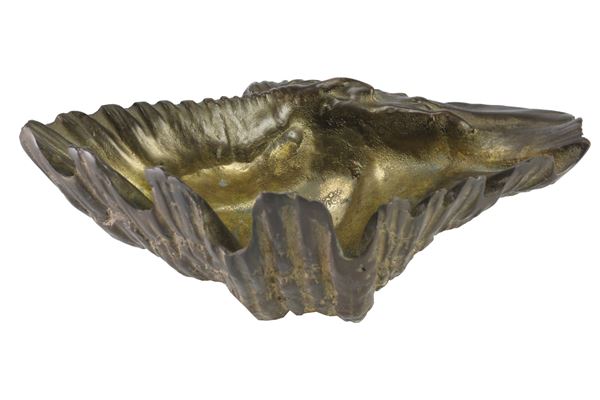Tridacna Shell, Padua school Probably 17th century
This rare bronze was cast from a direct cast of a real shell.
In the Renaissance, castings from life were often made in the Paduan area, following the taste for Nature-Artifice theme. Snakes, lizards, toads and spider crabs were covered with refractory material and heated at high temperatures. This technique left the artist with a perfect cast of their bodies to be used as a mold for later castings. Small studiolo objects such as inkwells, candlesticks and paperweights often concealed philosophical meanings related to the role of art in emulating nature. This tridacna falls into this category of objects.
Shells were often used as ink vessels and in the production of Severo da Ravenna and Gerolamo Campagna they were supported by satyrs in compositions of bronze inkwells. A similar large shell supported by a kneeling man is attributed to to Girolamo Campagna (Museo Correr, Venice; Vittoria and Albert Museum, London). Another shell, part of an inkwell, is attributed to the workshop of Severo Calzetta da Ravenna (Castello del Buonconsiglio, Trento).
This shell shows no signs of being part of another object (there are no holes or pins). It could be an autonomous work, representing itself and the union of nature and artifice.Bronze tridacne shells are present in works by Francesco Bertos (Venice 1678-1741), such as the basins with small putti musicians playing on the edges.
Charles Avery, Bertos The Triunph of Motion - Allemandi, Torino,2008, pp.256-261












